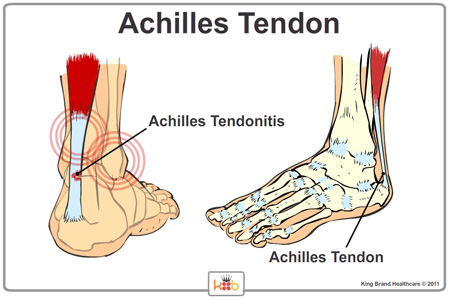Overview
Achilles tendinitis is caused by the overuse of the achilles tendon – which is found in the lower leg as a tissue that connects calf muscles to the heel bone.
This type of injury is found most common, but not limited to, in runners who suddenly increase the intensity or duration of their runs.
In the majority of cases, treatment is relatively simple, at-home care under the supervision of a qualified doctor, with a large focus placed on preventative measures, so that the injury doesn’t occur frequently. A more serious case of Achilles tendinitis can lead to to tendon tears – called ruptures – that may require surgical repair.
Symptoms
The initial pain associated with Achilles tendinitis usually takes the form of a mild ache in the back of the leg or slightly above the heel after running or another form of recreational activity such as basketball. Episodes of more severe pain are usually caused by continuous running or strain placed on the leg. Tenderness or stiffness are also common symptoms, which typically improve with mild, non-strenuous activity.
When should I consult someone?
If your pain is persistent and continuous around the achilles tendon, make sure to book an appointment to have it looked after. Immediate medical attention is required if the pain or impairment of the foot is severe, as it may hint at a torn tendon.

Location Point of Achilles Tendinitis On The Foot
Causes
Achilles tendinitis can be the result of repetitive or intense strain on the achilles tendon which, as perviously mentioned, is the tissue that connects the lower calf muscles to the heel bone. It is used continuously while walking, running, jumping or pushing up on your toes.
The structure of the tendon naturally deteriorates with age therefore making it more susceptible to injury.

Further Anatomical Overview of Achilles Tendonitis
Treatment Options
Tendinitis is usually well responsive to self care measures (such as restricting the intensity and duration of recreation activities) but if the pain is persistent, a foot doctor might be able to elevate some of the pain by creating custom orthotics which can relieve strain on the tendon, and provide a cushion that lessens the amount of force exerted on the tendon.
Preventative Options
The shoes you wear while exercising play a large role in minimizing the risk of recreation related injuries. Shoes should provide cushioning for your heels and should have a firm arch support.
